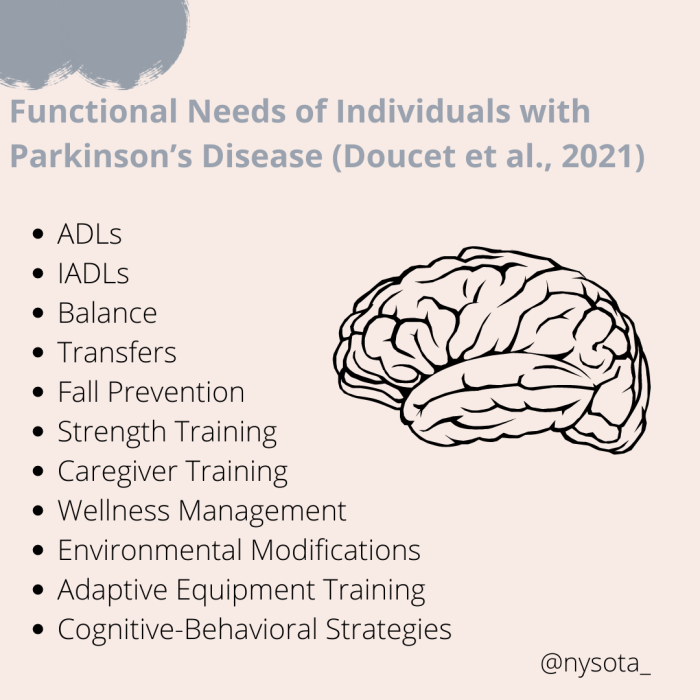Occupational therapy interventions for amputations play a pivotal role in empowering individuals to regain functional independence, improve their quality of life, and promote self-care skills following limb loss. This article delves into the multifaceted aspects of occupational therapy interventions, exploring the types, goals, assessment, planning, implementation, and outcomes associated with this specialized field.
Occupational Therapy Interventions for Amputations

Occupational therapy interventions for amputations aim to enhance functional independence, improve quality of life, and promote self-care skills in individuals who have undergone amputation surgery. These interventions play a crucial role in rehabilitation, addressing challenges and fostering a holistic recovery process.
Types of Occupational Therapy Interventions

Occupational therapists employ a range of interventions tailored to the specific needs of individuals with amputations:
| Intervention Type | Description |
|---|---|
| Prosthetic Training | Involves training individuals in the use and care of prosthetic devices, including donning, doffing, and maintenance. |
| Activities of Daily Living (ADL) Training | Focuses on regaining functional independence in everyday tasks such as bathing, dressing, cooking, and eating. |
| Sensory Retraining | Addresses sensory changes and phantom limb sensations through techniques like touch therapy, vibration stimulation, and mirror therapy. |
| Cognitive Rehabilitation | Aims to improve cognitive skills such as attention, memory, and problem-solving, which may be affected by amputation. |
Goals of Occupational Therapy Interventions
The primary goals of occupational therapy interventions for amputations include:
- Improving functional independence
- Enhancing quality of life
- Promoting self-care skills
- Maximizing participation in meaningful activities
- Facilitating return to work or school
Assessment and Evaluation
Occupational therapists conduct comprehensive assessments to determine appropriate interventions. This involves:
- Medical history review
- Physical and functional evaluations
- Cognitive and psychological assessments
- Observation of daily activities
- Use of standardized assessments and functional outcome measures
Intervention Planning

Intervention plans are developed in collaboration with the individual and their support team. This process includes:
- Setting patient-centered goals
- Identifying specific interventions to address individual needs
- Determining the frequency and duration of interventions
- Providing education and training to the individual and their caregivers
Intervention Implementation

Occupational therapists use a variety of specific interventions to address common challenges faced by individuals with amputations, including:
- Prosthetic gait training
- Balance and coordination exercises
- Adaptive equipment training
- Sensory stimulation and desensitization
- Cognitive rehabilitation exercises
Quick FAQs
What is the primary goal of occupational therapy interventions for amputations?
The primary goal is to improve functional independence, enhancing the individual’s ability to perform activities of daily living and participate in meaningful occupations.
How do occupational therapists assess individuals for appropriate interventions?
Occupational therapists conduct comprehensive assessments using standardized evaluations and functional outcome measures to determine the individual’s needs and develop an individualized intervention plan.
What is the role of assistive technology in occupational therapy interventions for amputations?
Assistive technology and adaptive equipment play a crucial role in enhancing functional independence, enabling individuals to compensate for lost limb function and engage in daily activities.